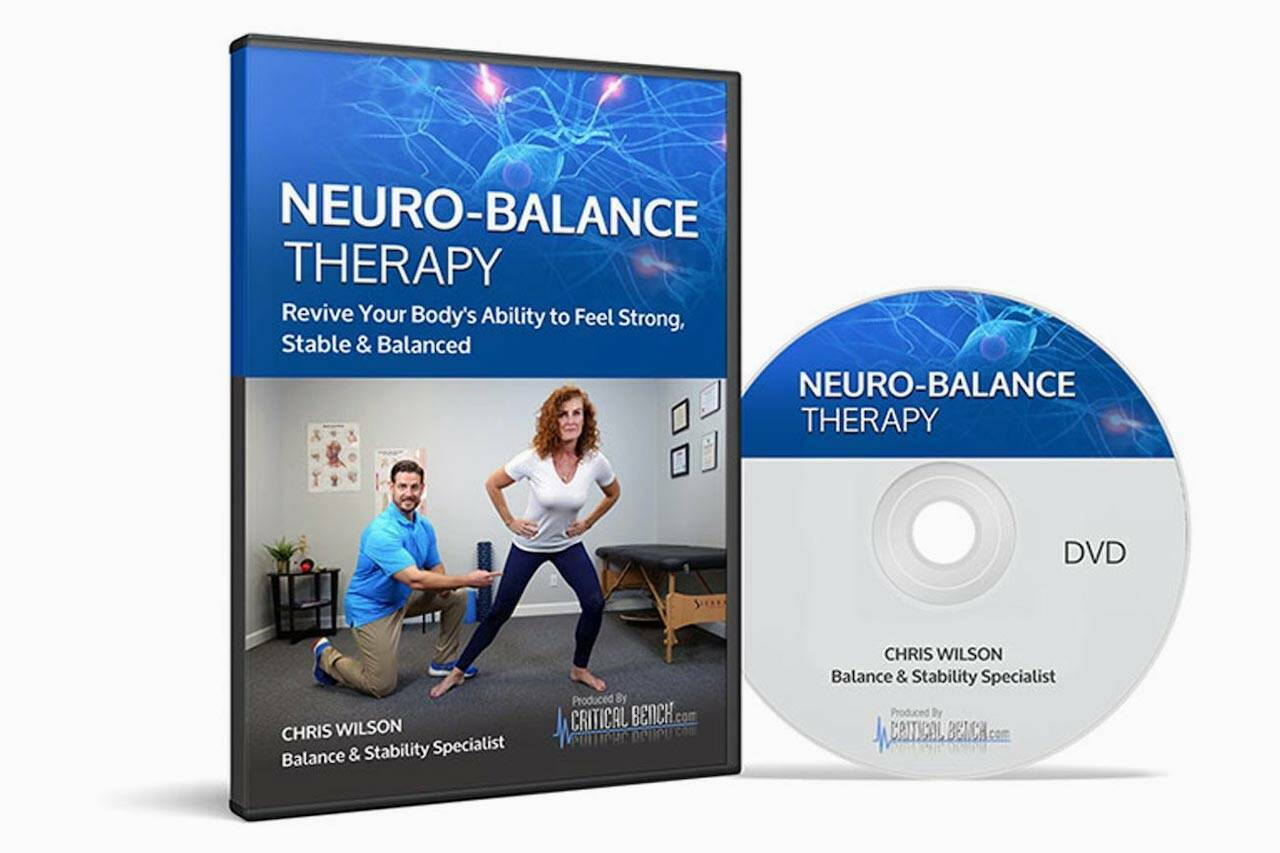Neuro-balance therapy is a type of therapy that focuses on restoring balance and optimal functioning to the nervous system. It is a holistic approach that combines various techniques and modalities to address imbalances in the nervous system, aiming to improve overall health and well-being.
Neuro-balance therapy takes into account the connection between the brain, nervous system, and other bodily systems, and seeks to restore harmony and balance to optimize physical, mental, and emotional health.
It may involve a combination of physical therapies, relaxation techniques, mindfulness, lifestyle changes, and other interventions to support the body’s natural ability to achieve optimal neuro-balance.
What neurological disorders cause balance problems?
There are several neurological disorders that can cause balance problems. Some common examples include:
- Vertigo: Vertigo is a sensation of spinning or dizziness that can result from a variety of underlying conditions, including inner ear disorders such as vestibular neuritis, Meniere’s disease, and benign paroxysmal positional vertigo (BPPV). Vertigo can disrupt the normal functioning of the vestibular system, which is responsible for maintaining balance.
- Parkinson’s disease: Parkinson’s disease is a progressive neurodegenerative disorder that affects movement, including balance and coordination. People with Parkinson’s disease often experience postural instability, which can lead to balance problems and an increased risk of falls.
- Multiple sclerosis (MS): Multiple sclerosis is a chronic autoimmune disease that affects the central nervous system, including the brain and spinal cord. MS can disrupt the normal functioning of nerve signals, leading to a wide range of symptoms, including balance problems and difficulty with coordination and gait.
- Cerebellar disorders: The cerebellum is a part of the brain that plays a critical role in coordination and balance. Disorders that affect the cerebellum, such as cerebellar ataxia, can cause problems with balance, coordination, and gait.
- Stroke: Stroke, which occurs when blood flow to the brain is disrupted, can damage areas of the brain that are responsible for balance and coordination. Depending on the location and severity of the stroke, it can result in balance problems and difficulty with coordination.
- Peripheral neuropathy: Peripheral neuropathy is a condition that affects the peripheral nerves, which transmit signals between the central nervous system and the rest of the body. Peripheral neuropathy can cause disruptions in nerve signals related to balance, leading to balance problems and coordination difficulties.
It’s important to note that balance problems can have various causes, and a thorough evaluation by a qualified healthcare professional is necessary to determine the underlying cause and appropriate treatment for balance issues related to neurological disorders.
Does neuro-balance therapy work?
The effectiveness of neuro-balance therapy can vary depending on the individual, the specific condition being addressed, and the approach used by the practitioner. Neuro-balance therapy is a holistic approach that aims to restore balance and optimal function to the nervous system through various techniques and modalities.
Some individuals may experience positive results from neuro-balance therapy, such as reduced symptoms, improved well-being, and increased overall health and vitality. It may be particularly helpful for addressing issues related to stress, anxiety, pain, and other nervous system imbalances. However, the effectiveness of neuro-balance therapy can vary from person to person, and results may not be guaranteed for everyone.
It’s important to work with a qualified healthcare professional or practitioner who specializes in neuro-balance therapy and to follow an individualized treatment plan tailored to your specific needs and goals. It’s also important to note that neuro-balance therapy is often used as part of a comprehensive approach to health and wellness, and it may not be a standalone solution for all health conditions. Consulting with a qualified practitioner and discussing the potential benefits and risks of neuro-balance therapy is recommended before starting any new treatment approach.
What is neuro balance good for?
Neuro-balance therapy can be beneficial for a variety of conditions and symptoms, including:
- Stress and anxiety: Neuro-balance therapy techniques can help to reduce stress and anxiety by promoting relaxation, calming the nervous system, and improving overall emotional well-being.
- Chronic pain: Neuro-balance therapy may help to address chronic pain conditions by targeting the nervous system and promoting optimal functioning, which can reduce pain signals and improve pain management.
- Neurological disorders: Neuro-balance therapy may be beneficial for individuals with neurological disorders such as multiple sclerosis (MS), Parkinson’s disease, or stroke, by promoting neuroplasticity, improving nerve function, and supporting overall neurological health.
- Emotional imbalances: Neuro-balance therapy may assist in regulating emotions, improving mood, and addressing emotional imbalances such as depression, mood swings, and emotional instability.
- Physical imbalances: Neuro-balance therapy may help to address physical imbalances such as poor posture, muscle imbalances, and coordination issues by optimizing the functioning of the nervous system.
- Cognitive function: Neuro-balance therapy may help to support cognitive function, including memory, focus, and concentration, by promoting optimal brain health and nervous system functioning.
- Overall well-being: Neuro-balance therapy can contribute to overall well-being by supporting the body’s natural ability to achieve balance, harmony, and optimal functioning of the nervous system, which can impact various aspects of physical, mental, and emotional health.
It’s important to note that the effectiveness of neuro-balance therapy may vary depending on individual circumstances, and it’s recommended to consult with a qualified healthcare professional or practitioner before beginning any new therapeutic approach.
What do they do at neuro-balance therapy?
Neuro-balance therapy typically involves a combination of techniques and approaches aimed at optimizing the functioning of the nervous system to promote balance, well-being, and overall health. The specific techniques and methods used may vary depending on the practitioner and the individual’s needs, but some common approaches may include:
- Neurological assessments: Neuro-balance therapy may involve a thorough assessment of the individual’s nervous system functioning, which may include evaluating reflexes, coordination, muscle strength, sensory perception, and other neurological parameters to identify any imbalances or dysfunctions.
- Therapeutic exercises: Neuro-balance therapy may incorporate specific exercises or movements designed to promote optimal nervous system functioning, coordination, and balance. These exercises may focus on various aspects, such as posture, core stability, muscle strengthening, flexibility, and coordination.
- Mind-body techniques: Neuro-balance therapy may include mind-body techniques such as breathing exercises, relaxation techniques, meditation, and mindfulness practices to promote relaxation, stress reduction, and overall emotional well-being.
- Neuromuscular techniques: Neuro-balance therapy may involve manual techniques aimed at stimulating or calming the nervous system, such as trigger point therapy, myofascial release, joint mobilization, or other hands-on approaches to improve nerve function, reduce pain, and optimize nervous system balance.
- Lifestyle modifications: Neuro-balance therapy may involve recommendations for lifestyle modifications, such as nutrition, sleep hygiene, stress management, and other lifestyle factors that can impact nervous system functioning and overall well-being.
- Education and self-care strategies: Neuro-balance therapy may include education and self-care strategies to empower the individual with knowledge and tools to maintain optimal nervous system balance and well-being in their daily life. This may include advice on ergonomics, postural awareness, stress management techniques, and self-care practices.
It’s important to note that the specific techniques and approaches used in neuro-balance therapy may vary depending on the practitioner, and it’s recommended to consult with a qualified healthcare professional or practitioner to determine the best approach for an individual’s unique needs.
How do you get neuro-balance therapy?
Neuro-balance therapy is typically administered by qualified healthcare professionals or practitioners who have specialized training in this modality. The specific techniques and modalities used in neuro-balance therapy may vary depending on the practitioner’s approach and the condition being addressed.
To receive neuro-balance therapy, you would typically need to schedule an appointment with a qualified healthcare professional or practitioner who offers this type of therapy. During the appointment, the practitioner will assess your individual needs and health history to create a customized treatment plan tailored to your specific condition and goals.
Neuro-balance therapy may involve a variety of techniques, such as chiropractic adjustments, acupuncture, craniosacral therapy, neurofeedback, and other modalities aimed at restoring balance and optimal function to the nervous system. The duration and frequency of neuro-balance therapy sessions will depend on the practitioner’s recommendation and your individual needs.
It’s important to choose a qualified healthcare professional or practitioner who has appropriate credentials and experience in neuro-balance therapy. You can research and find practitioners in your area who offer this modality, and it’s recommended to consult with them to determine if neuro-balance therapy is appropriate for your individual health needs.
What therapy is best for neuro-balance?
There are several different therapies and modalities that can be used to address neuro-balance, and the most suitable therapy may vary depending on an individual’s specific condition, symptoms, and overall health. Some common therapies that may be used for neuro-balance include:
- Chiropractic care: Chiropractic adjustments, which involve manipulating the spine and other joints in the body, are often used to address imbalances in the nervous system and promote optimal nerve function.
- Acupuncture: Acupuncture, an ancient Chinese medicine technique involving the insertion of thin needles into specific points on the body, is believed to help balance the flow of energy (qi) and promote overall health and well-being.
- Craniosacral therapy: Craniosacral therapy is a gentle, hands-on approach that involves manipulating the skull, spine, and other parts of the body to release tension and restore balance to the nervous system.
- Neurofeedback: Neurofeedback is a type of biofeedback that uses sensors to measure brain activity and provides real-time feedback to help individuals learn to self-regulate their brainwaves and promote better neuro-balance.
- Mind-body therapies: Mind-body therapies, such as meditation, mindfulness, and yoga, can help individuals manage stress, improve relaxation, and promote overall well-being, which can in turn impact neuro-balance.
It’s important to note that the best therapy for neuro-balance will vary depending on the individual’s specific condition and needs. It’s recommended to consult with a qualified healthcare professional or practitioner who has experience in neuro-balance therapies to determine the most suitable approach for your individual health needs.
How long does neuro-balance therapy last?
The duration of neuro-balance therapy can vary depending on various factors, including the individual’s condition, goals, and the specific approach used by the practitioner. Some sessions may be shorter, lasting around 30 minutes to an hour, while others may be longer, lasting up to 90 minutes or more.
The frequency and duration of neuro-balance therapy sessions may also depend on the severity of the condition being addressed and the individual’s response to the treatment. In some cases, a series of initial sessions may be recommended, followed by periodic maintenance sessions to sustain the benefits achieved. The overall duration of neuro-balance therapy may be weeks, months, or longer, depending on the individual’s progress and goals.
It’s important to note that neuro-balance therapy is typically used as part of a comprehensive approach to address nervous system imbalances and promote overall health and well-being. The exact duration and frequency of therapy sessions may be determined through an individualized treatment plan developed in consultation with a qualified healthcare professional or practitioner specializing in neuro-balance therapy.
When should you find neuro-balance therapy?
Neuro-balance therapy may be appropriate in several situations where an individual is experiencing balance problems due to neurological conditions. Some indications for considering neuro-balance therapy may include:
- Diagnosis of a neurological disorder: If an individual has been diagnosed with a neurological disorder known to cause balance problems, such as Parkinson’s disease, multiple sclerosis, or cerebellar disorders, neuro-balance therapy may be recommended as part of their treatment plan.
- Persistent balance problems: If an individual is experiencing ongoing balance problems that are affecting their daily activities and quality of life, despite other interventions or treatments, neuro-balance therapy may be considered to address the underlying neurological causes of their balance issues.
- Increased fall risk: If an individual has an increased risk of falls due to balance problems related to a neurological condition, neuro-balance therapy may be recommended to improve their balance and reduce the risk of falls.
- Rehabilitation after neurological injury or surgery: If an individual has undergone surgery or experienced an injury related to the nervous system that has resulted in balance problems, neuro-balance therapy may be included as part of their rehabilitation program to regain balance and coordination.
- Prevention and maintenance: Neuro-balance therapy may also be considered as a preventive measure or for ongoing maintenance for individuals with certain neurological conditions that are known to impact balance, even if they are not currently experiencing significant balance problems.
It’s important to consult with a qualified healthcare professional, such as a neurologist or physical therapist, to determine the appropriateness of neuro-balance therapy in individual cases and to develop a customized treatment plan tailored to the specific needs and condition of the individual.
<<See more the best neuro-balance therapy here!! >>
Newest Gangbuster VSL from time tested publisher Critical Bench. Neuro-Balance Therapy is the complete balance-strengthening protocol to help prevent and prepare your body for out of the blue trips and falls. Perfect for a men and women over 50 years old.
Do you really need neuro-balance therapy?
Whether or not an individual needs neuro-balance therapy depends on their specific condition and symptoms. Neuro-balance therapy is typically recommended for individuals who are experiencing balance problems due to neurological conditions or injuries that affect the nervous system. It may also be beneficial for individuals who are at an increased risk of falls or have persistent balance issues that impact their daily activities and quality of life.
Neuro-balance therapy is usually administered by qualified healthcare professionals, such as neurologists or physical therapists, and may include various techniques, exercises, or interventions aimed at improving balance, coordination, and proprioception (awareness of body position in space). It is typically tailored to the individual’s needs and condition, and the duration and frequency of therapy may vary depending on the severity of the balance problems and the underlying neurological condition.
It’s important to consult with a healthcare professional to determine the appropriateness of neuro-balance therapy for an individual’s specific situation. They can assess the individual’s condition, provide a diagnosis, and recommend appropriate treatment options, which may include neuro-balance therapy as part of a comprehensive care plan.
Related Posts
What is the fastest way to relieve back pain?
Back pain is a common ailment that affects people of...
Read MoreWhat do you know about anabolic running?
Anabolic Running is a fitness program designed to help individuals...
Read MoreIngredients For A Healthy Life
Cardio recipe for good heart health. Our priority is to...
Read MoreHow can running protect you against cancer?
Exercise is one of the most important activities to make...
Read MoreProducts recommended in the post contain affiliate links. We may receive a commission when you buy something through our posts.
Why Trust Us
You will find what you are looking for at Black Friday Weeks. From classic to luxury brands, you'll find both. We will help you to select appliances that fit your needs, budget and lifestyle. Whether you want to stop by to learn more — or plan to make a major purchase — we’ll treat you like family and assist you every step of the way. Shop with us today to receive friendly and experienced help along the way.





